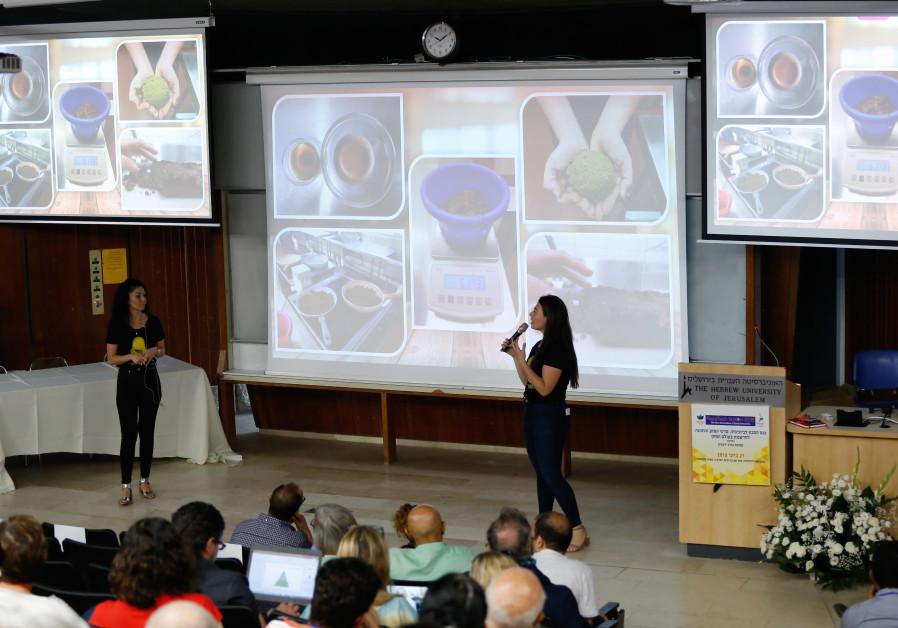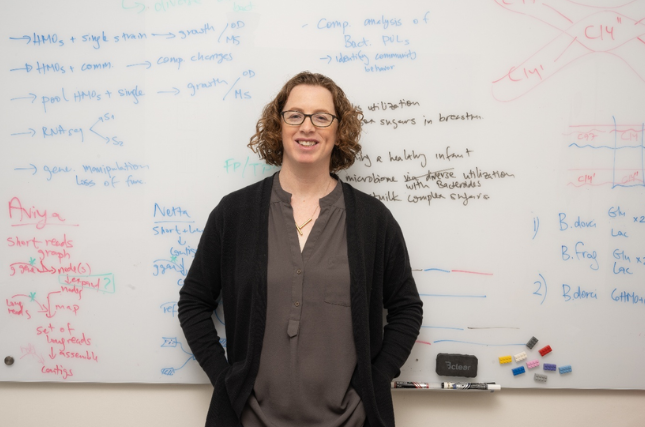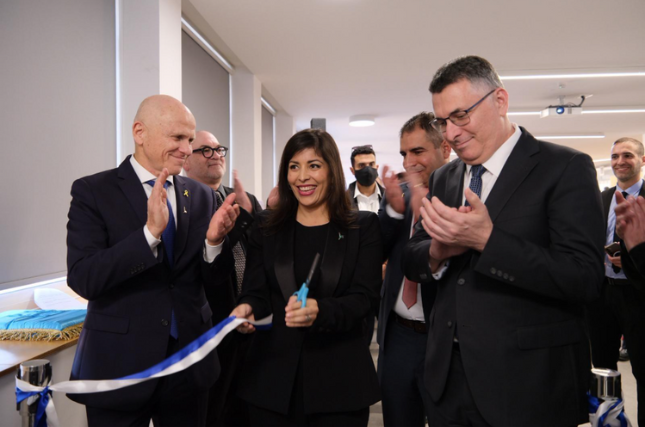
The future of healthy eating drew crowds Thursday at the Robert H. Smith Faculty of Agriculture at Hebrew University in Rehovot. Celebrating the institution’s 75th anniversary and giving students the opportunity to showcase their work, about 300 people came to the event featuring some of the latest developments in Israeli food technology from 3D printing meals to protein powder from fly larva.
“The purpose [of the conference] is to combine industry and academia together,” Institute of Biochemistry, Food Science and Nutrition head Oren Froy said. “We have a course of developing food products and so we thought it would be a great idea to combine all that into a conference and present the products developed during that course.”
In the class, students focus on topics including why new products are developed, the raw materials necessary for creating a new product and current trends in the food industry. When they create their product, they have a deadline and limited resources, just like in the real world.
“If they’re small, medium or multinational companies, they know that they continuously have to find the next product,” said Tammy Meiron, who teaches the new food product development course, in which all students who were presenting were enrolled. “And this is the purpose of our class, to give [students] the tools how to be there.”
One group of students made a gluten-free health bar with dates using avocado powder.
“In the avocado oil industry there’s a lot of food waste…so with that food waste we had to create a new product,” said Reut Rov, a student who worked on the project. “We tried a lot of applications for this avocado…and we found that the best thing to do with it is to make a kind of powder, and the best quality of the avocado is something that is very fibrous.”
This powder can go in many types of foods, even fruit shakes and cookies, Rov said.
Oded Shoseyov, a Hebrew University professor who works on 3D food printing, said he thinks this product has “huge potential.”
“Particularly because I could feel the slight bitterness, so that for me indicates a lot of polyphenols, which are known to be healthy,” he said. “They still need to work on the taste there, but that’s doable…the level that they reached so far with taking into consideration the relatively short period of time—they did a good job.
For his part, Shoseyov aims to use cellulose to print veggie burgers. In the future, he said he believes he’ll be able to make steak on a bone and possibly foods that don’t exist, such as burgers with fries in the middle.
This product may also have important practical uses.
“For example, the regular kitchen in a hospital has so many requirements…here it’s digital so you can, really with the same basic ingredients, you can do everything,” Shoseyov said, citing patients who may need low fat or low salt. “This is going to be also a dramatic change to the supply chain because all these materials have a long shelf life.”
Another group of students producing ice cream and sherbets enriched with protein from fly larva. They said their ice cream has 10% protein and their sherbert has five percent.
“The world is going to a place where food is going to end, so we need to find new sustainable foods or sources of foods,” said Ariel Rudik, who worked on the project.
Froy said although Israel has the same the problems in the food technology industry as in other industries—“being small, not in a common market at least not with its neighbors,” European and American markets love these products and accept Israeli innovations “We’ve come to a conclusion that joining forces together entrepreneurs, investors, academia, food industry, new ideas that’s what makes us a start-up nation,” Froy said.




